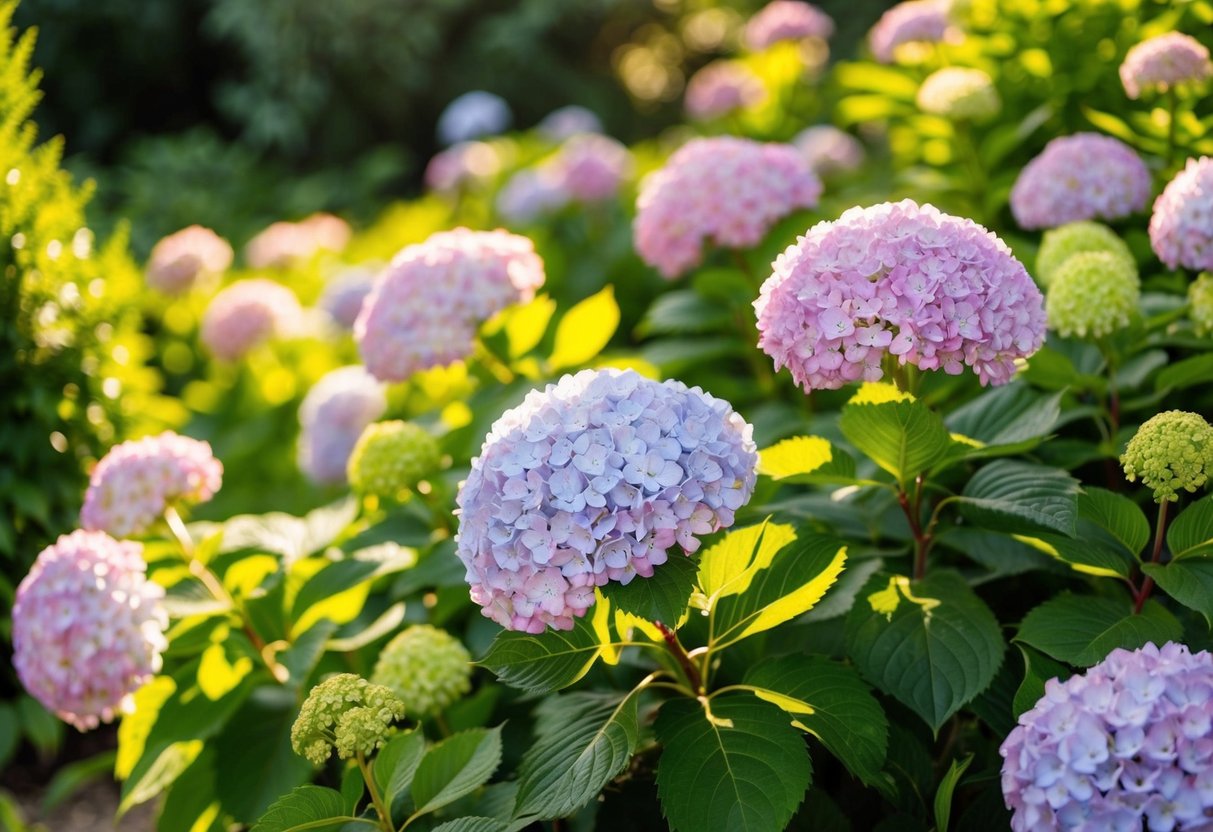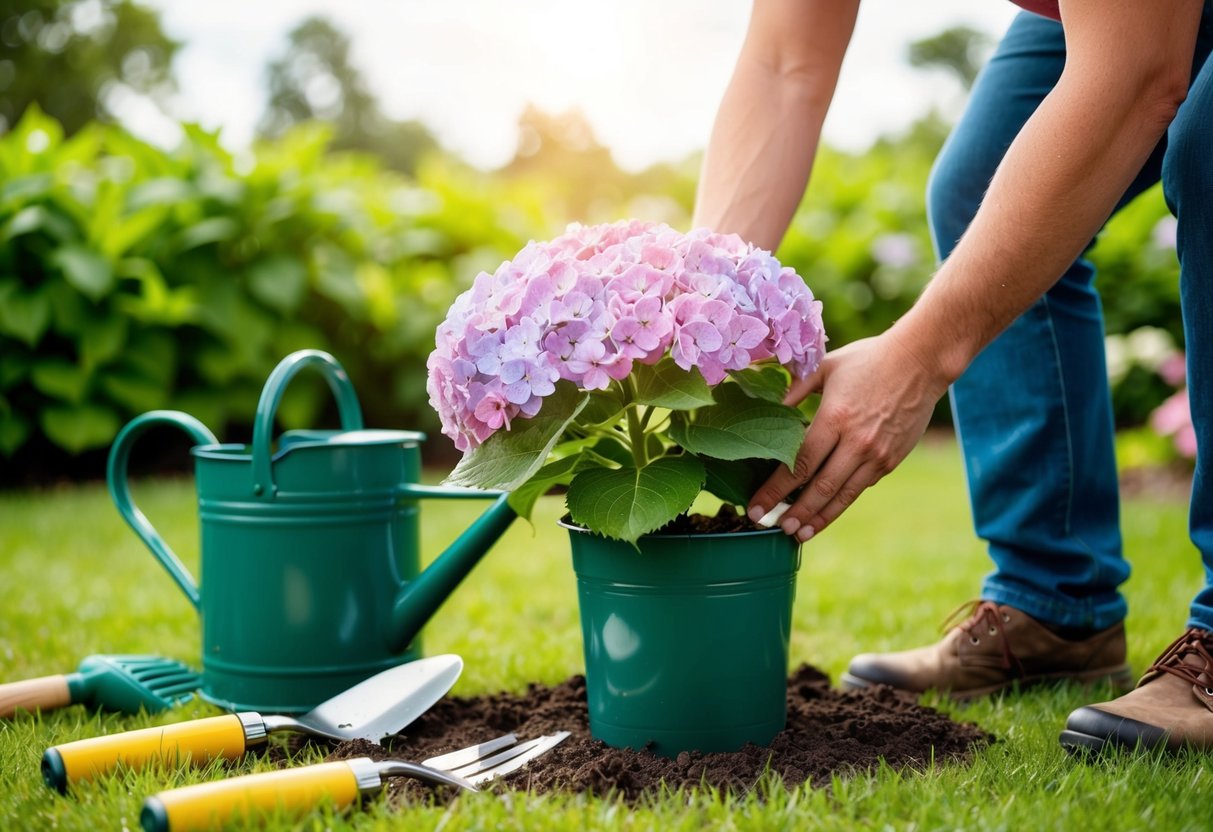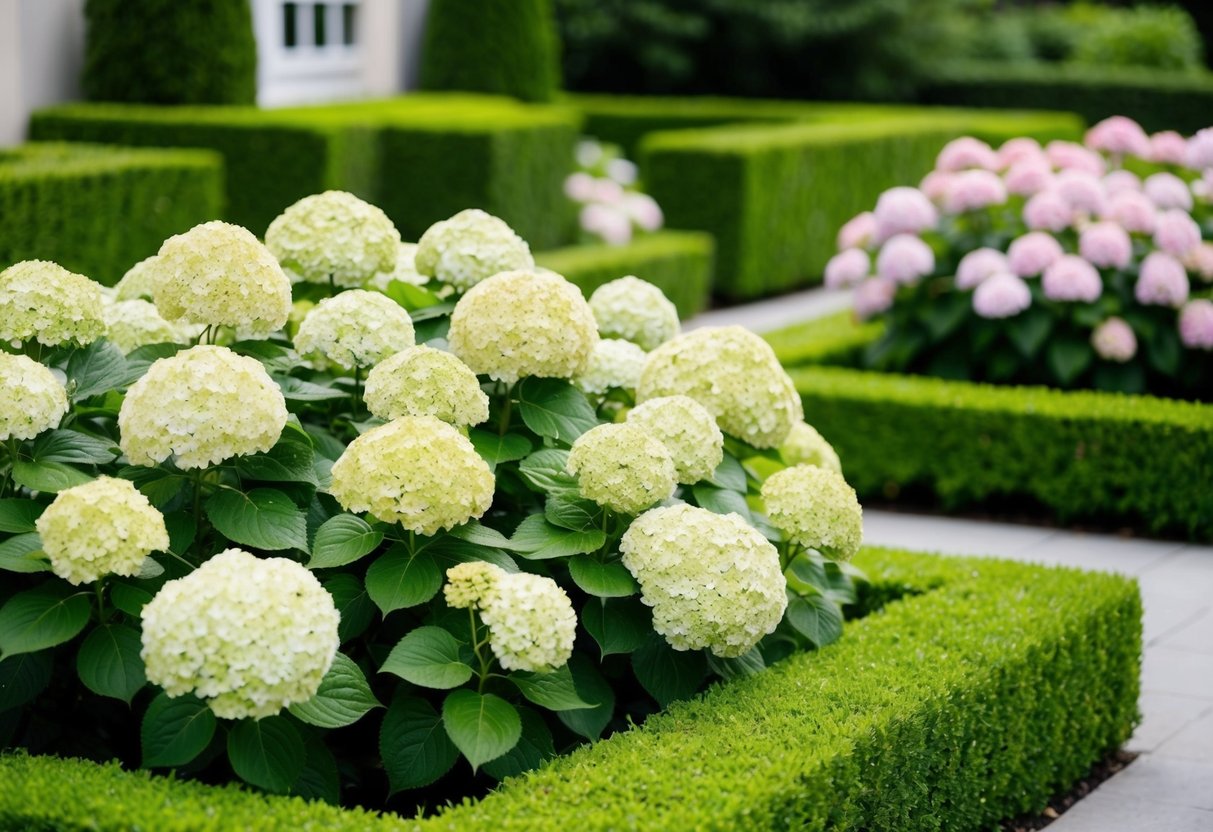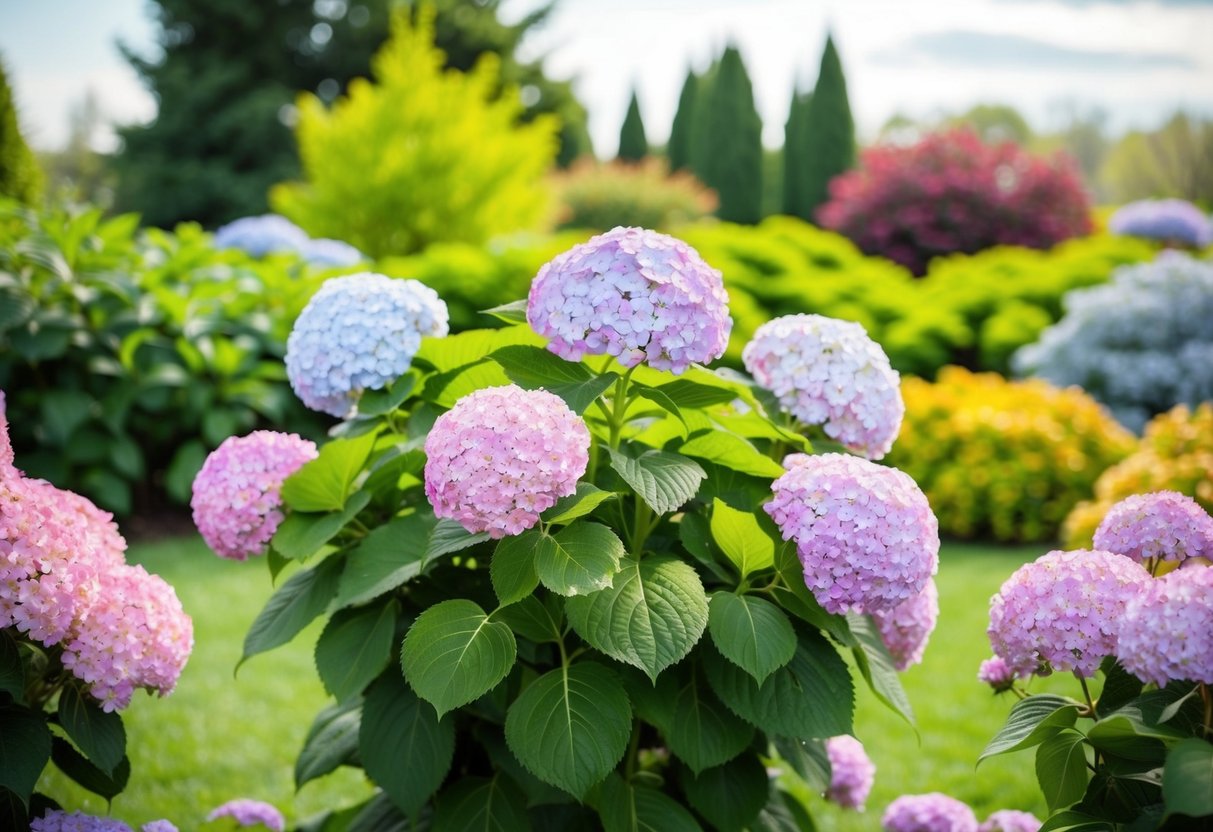Are Hydrangeas Good All Year Round? Discover Seasonal Tips
Hydrangeas are a beautiful choice for year-round interest in your garden. Their lush blooms and vibrant colors easily capture attention. These flowering shrubs can indeed provide beauty all year round, especially when you choose evergreen varieties.
With options like the Climbing Evergreen Hydrangea, you can enjoy greenery even in the colder months.

Most hydrangeas are known for their stunning flowers in spring and summer. By selecting the right types, you can maintain color and texture in your garden through all seasons. Some are even perfect for year-round color, adding to the allure of your outdoor space.
These shrubs offer versatility and charm that can transform your landscape. They adapt to various conditions, making them a practical choice for many gardens.
Whether in full bloom or showcasing their foliage, hydrangeas keep your garden lively and appealing year-round.
Understanding Hydrangeas

Hydrangeas are a favorite among gardeners because of their beautiful blooms and versatility in the garden. In this section, you will learn about different types and varieties of hydrangeas and what makes each special.
Types of Hydrangeas
There are several types of hydrangeas, each with its own unique characteristics. Hydrangea macrophylla, often called bigleaf hydrangea, is known for its large, colorful blooms. This type is perfect for adding a splash of color to your garden.
Then there is hydrangea paniculata, or panicle hydrangeas, which have cone-shaped flowers that turn pink as they age.
Next, you have the smooth hydrangea, scientifically known as hydrangea arborescens. They are known for their sturdy stems and can bear large snowball-like white blooms.
For something a little different, try the climbing hydrangea or hydrangea anomala. This variety can climb walls and trellises, creating a lush green backdrop.
Hydrangea Varieties and Their Blooms
Different hydrangea varieties offer a range of bloom shapes and colors. For a classic look, consider varieties like the bigleaf hydrangea, whose flowers can change color based on soil pH. Acidic soil gives you blue blooms, while alkaline soil gives you pink.
The panicle hydrangeas, such as Limelight or Grandiflora, produce dramatic white blooms that are perfect for late summer gardens. Seemann’s hydrangea and Chinese quinine, also known as dichroa febrifuga, are less common but offer delicate, unique flowers.
For reliable blooms, the smooth hydrangea, like the Annabelle variety, is hard to beat. It offers a long-lasting summer display of white flowers. These varieties provide diversity and charm in any garden setting.
Planting and Basic Care

Hydrangeas bring vibrant colors to gardens and require thoughtful care. For best results, consider their location and soil needs to ensure healthy growth.
Choosing the Right Location
When planting hydrangeas, select a spot that balances sunlight and shade. Most hydrangeas do well in areas with partial shade as too much direct sunlight can damage them.
Full sun for a few hours in the morning followed by shade in the afternoon is ideal. This helps keep them vibrant while preventing wilting. Deciduous shrubs like hydrangeas perform best when shielded from harsh afternoon sunlight.
Avoid places with strong winds that can stress the plants. Gentle air circulation is good to prevent diseases but harsh winds can damage the blooms.
Soil Preparation and Planting
Good soil is key for healthy hydrangeas. Aim for well-draining soil that’s rich in organic material and compost, which helps retain moisture without waterlogging.
A soil test can help determine the soil pH, which should generally be between 5.2 and 6.2. If needed, you can adjust pH with suitable amendments to ensure vibrant blooms.
When planting, dig a hole wider than the root ball and backfill with amended soil. Mulch the soil surface with a thick layer, avoiding the stem area, to retain moisture and suppress weeds.
Mulch also adds nutrients as it breaks down, further enhancing the soil and keeping your hydrangeas healthy and blooming beautifully. For more tips, you can explore guides like this one from Monrovia.
Year-Round Maintenance

Maintaining hydrangeas throughout the year involves careful attention to their watering and fertilizing needs. Ensuring proper care helps prevent issues such as fungal diseases and promotes strong, healthy growth.
Watering Requirements
Hydrangeas need consistent moisture to thrive. During the growing season, aim to water deeply once a week, ensuring the soil remains moist but not waterlogged.
Use mulch to retain moisture, improve soil quality, and maintain a slightly acidic pH. This helps prevent fungal diseases by ensuring good airflow around the plant.
In fall, water hydrangeas every few days to support root health. In winter, watering is less frequent, about once a month, just enough to keep roots from drying out.
Morning watering is best to avoid prolonged wet surfaces and reduce the risk of diseases.
Fertilizing for Healthy Growth
Fertilizing hydrangeas properly promotes vibrant blooms and robust growth. Use a balanced, slow-release fertilizer in spring to enhance growth as new leaves appear. A 10-10-10 fertilizer is ideal for general hydrangea care.
In summer, a smaller amount of fertilizer supports ongoing growth.
Organic matter like compost or aged manure enriches the soil and boosts nutrient levels naturally. Avoid over-fertilizing to prevent leaf burn or weak blooms, and always follow specific product instructions.
Remember to prune hydrangeas in early spring or after flowering, depending on the species, to maintain shape and encourage new growth. Regular maintenance allows your hydrangeas to flourish throughout the year.
Pruning and Bloom Management

Pruning hydrangeas is essential for lush blooms and vibrant flower color. It involves when and how you trim the plants, which can affect their blooming potential. Here’s what you need to know for beautiful blooms all season long.
When and How to Prune
Hydrangeas need careful pruning based on whether they bloom on old or new wood. Old wood varieties like bigleaf and oakleaf should be pruned right after they finish blooming. This encourages new growth for the next season.
In contrast, new wood types such as smooth and panicle hydrangeas can be trimmed in early spring. Remove dead branches first, then cut remaining stems down by about one-third. This helps maintain healthy growth and stunning flower clusters.
Some hydrangeas tolerate heavier pruning. For example, panicle hydrangeas can be cut back to 12-15 inches above the ground. Apply these practices depending on the type of hydrangea you have.
Maximizing Bloom Potential
To get the best blooms, consider the soil and nutrients your hydrangeas need. Well-drained soil is critical for healthy growth, while phosphorus-rich fertilizers boost blooming potential. Phosphorus supports strong flower clusters and lasting color.
The color of your hydrangea flowers depends on the soil pH. Acidic soil may turn them a vibrant blue, while alkaline soil brings out pink colors. Adjusting soil pH can enhance the color you prefer.
Ensure your hydrangeas receive just the right amount of sun. Morning or evening sun is ideal, with shade during the hottest parts of the day. This balance promotes vigorous and consistent blooming throughout the season.
Seasonal Considerations

Hydrangeas require specific care to thrive throughout the year. They need particular attention during winter for protection and additional care in summer to promote blooming.
Winter Care
During winter, focus on preserving your hydrangeas. Many types, like the oakleaf hydrangea, benefit from a layer of mulch. This insulates the roots from freezing temperatures and helps retain moisture.
Pay attention if you are in hardiness zones 5-7, as harsher winters can impact survival.
Shade and sunlight are key factors. Keep your hydrangeas protected from strong, direct sunlight, especially during winter afternoons. Shade helps prevent them from drying out.
If you’re considering transplanting during this time, do so when roots are dormant and avoid damaging the root ball.
Summer Thriving
Summer is a vital period for hydrangea growth. Ensure proper watering. More frequent watering is crucial during hot months.
Hydrangeas admire morning sunlight, but too much exposure can lead to wilting. Make sure they get some shade during peak sunlight hours.
Varieties like lacecap hydrangea can be prone to drying if left under direct sunlight for too long. Regularly prune the flower heads to encourage more blooms. Light pruning keeps the shrub’s shape neat and promotes new growth.
If you maintain this care, your hydrangeas will be splendid ornamental shrubs in any garden setting. Use the summer to boost their health and beauty.







